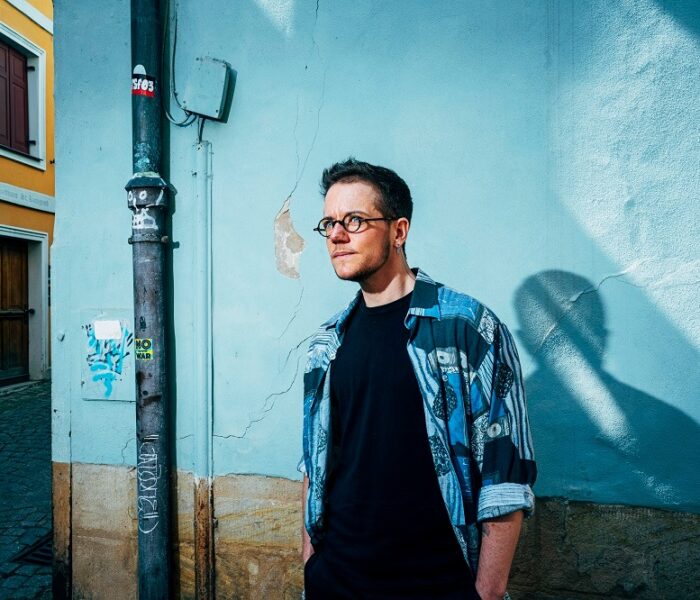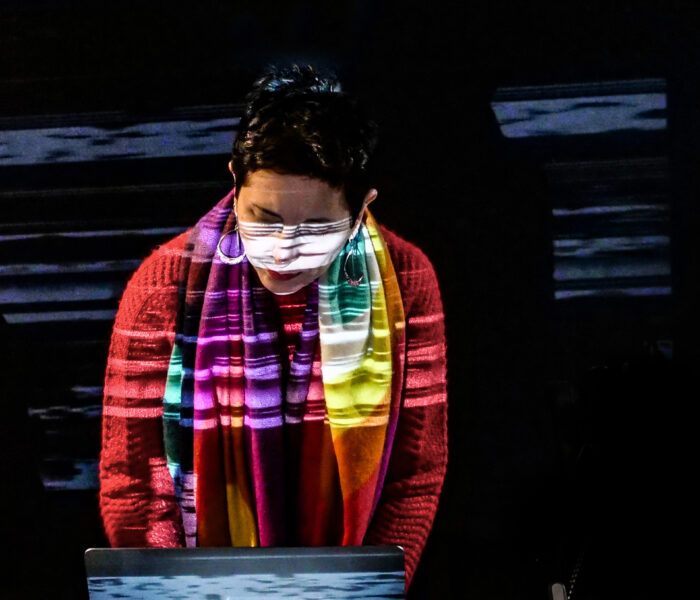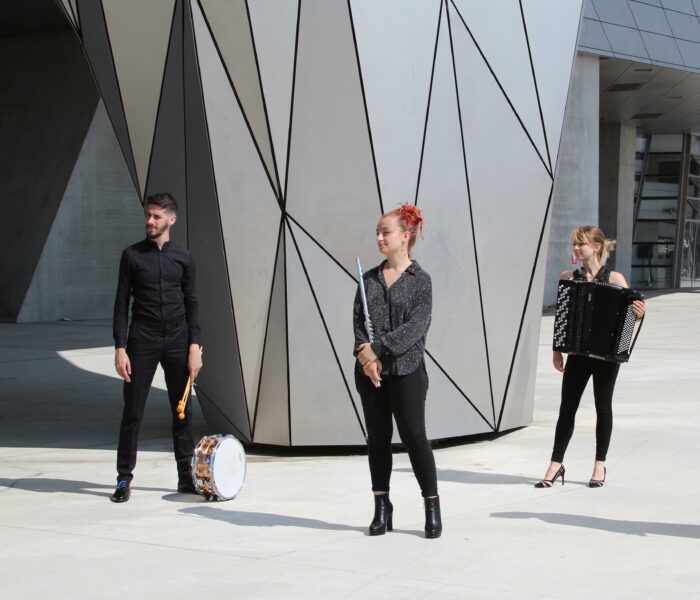Le dieu romain aux deux visages prête son nom à un projet absolument inédit, tourné, comme lui, vers le passé et le futur : « Janus », le programme commun du Centre de musique baroque de Versailles et de l’Ircam invite quatre jeunes compositrices et compositeurs européens à s’inspirer de la musique baroque française pour composer de nouvelles œuvres. Un projet au long cours, mené de 2022 à 2024, avec une première phase de création dans le cadre du festival Manifeste 2023.
Nous avons rencontré Fabien Armengaud et Clément Buonomo, le directeur artistique et musical et le directeur adjoint de la Maîtrise du CMBV, en amont, pour discuter du travail préparatoire de cette rencontre musicale.
Répertoires du passé, musiques de l’avenir, hier et demain : de prime abord, on pourrait penser que rares sont les points communs entre les objets d’étude du CMBV et ceux de l’Ircam. Et pourtant…
Créer des passerelles entre les répertoires
« Erreur ! insiste Fabien Armengaud. Ce sont deux grands centres de recherche et il existe de nombreuses similarités dans nos démarches respectives, que ce soit celle du CMBV, créé en 1986, tournée vers la musique baroque et celle l’Ircam, né en 1977, avec la musique contemporaine et notamment la création électroacoustique. Les équipes des deux maisons questionnent sans cesse les répertoires, les notions d’interprétation, de restitution et de diffusion… » Ensemble, les deux maisons veulent créer des passerelles entre les répertoires. « Nos structures ont en commun le rapport au temps – musiques du passé, du présent et de l’avenir – mais aussi… le temps de mener à bien des projets de longue haleine. Une vraie nécessité aujourd’hui ! » précise Clément Buonomo.
Susciter une alchimie
Grâce au projet Janus, deux univers musicaux se rencontrent. Celui des Pages et des Chantres, habitués, formés aux répertoires anciens et ceux, tous différents, de quatre jeunes compositeurs et compositrices d’aujourd’hui, venus des quatre coins de l’Europe, ou presque : l’Espagnole Ariadna Alsina Tarrés, la Lituanienne Justina Repečkait, le Français Adrien Trybucki et le Serbe Jug Markovic. « Rappelons qu’à la Maîtrise, nous travaillons avec des étudiants – des enfants, de jeunes adultes – qui, pour la plupart, ne connaissent pas du tout le répertoire contemporain ! C’est un véritable dialogue qu’il a fallu nouer au cours de cette dernière année. », insiste Clément Buonomo.
Il a fallu apprendre à se connaître pour, ensuite, susciter une alchimie. Et, pour cela, prendre le temps était indispensable. Un luxe dans les projets, aujourd’hui. « Nous n’avons pas voulu d’un projet où l’on se serait dit « Allez, on va faire des créations, point ». Il y a un vrai chemin commun, un véritable compagnonnage entre la Maîtrise et les quatre compositeurs et compositrices, sans oublier les ingénieurs du son de l’Ircam », raconte Fabien Armengaud.
Se familiariser avec les codes du baroque
Adrien, Ariadna, Jug et Justina sont venus plusieurs fois en exploration au CMBV avant de se mettre à l’ouvrage. A Versailles, ils se sont familiarisés avec la façon de travailler de la maîtrise et, bien sûr, le son du chœur. « Nous leur avons présenté en détail un large panel d’œuvres représentatives du baroque français et les partenaires du CMBV leur ont présenté plusieurs instruments anciens avec leurs particularités et possibilités techniques et expressives, comme l’orgue ou le théorbe qui offrent un champ des possibles enthousiasmant aux compositeurs d’aujourd’hui. L’exploration et la familiarisation a ainsi eu lieu dans les deux sens ! », poursuit Fabien Armengaud. « Côté compositrices et compositeurs, Ariadna Alsina Tarrés et Justina Repečkaitė avaient déjà quelques notions en musique ancienne, c’était moins le cas de Jug Markovic et d’Adrien Trybucki qui arrivaient en terrain vierge. » se souvient Clément Buonomo.
Lire la musique d’aujourd’hui
Arrive, en juin 2022, la deuxième étape : une grande journée de travail et une « performance practice » publique au Centquatre, à Paris, autour d’une sélection de pièces d’Adrien et Ariadna. « Ils avaient choisi des échantillons qui présageaient déjà de ce à quoi allait ressembler leurs futures créations, histoire de nous mettre en appétit et toujours dans ce souci d’immersion de nos choristes dans des univers musicaux inconnus pour eux, explique Fabien. Cette mise en situation est vertueuse d’un point de vue artistique : elle fait comprendre à nos jeunes interprètes que la musique s’exprime de bien des façons. »
Le défi, pour les Pages et les Chantres habitués à lire des partitions baroques, voire plus anciennes, était notamment de déchiffrer la notation de la musique d’aujourd’hui et les partitions de ces pièces de musiques électroacoustique. Chacune des œuvres comporte des parties enregistrées en amont par les ingénieurs de l’Ircam et des parties qui seront chantées en direct. « Pour nos musiciens, les parties chantées en direct posent plus de questions que les parties enregistrées, explique Clément Buonomo. Ils sont très actifs et s’interrogent sur le sens de ce qu’ils chantent. Notre travail est de les guider, de leur expliquer l’interprétation de ces pièces, une compréhension esthétique. Bref, sinon de vulgariser, du moins de leur traduire ces œuvres. »

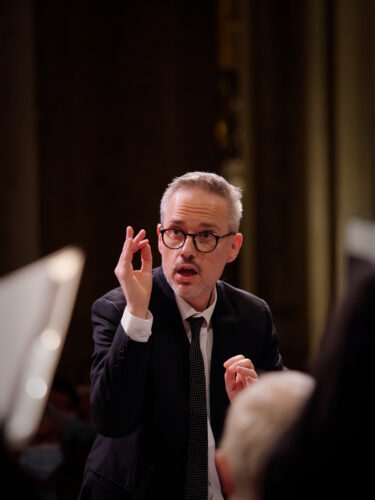
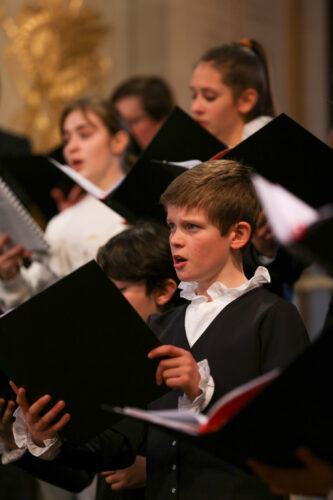
Digérer, incorporer un héritage… et jouer avec
L’œuvre d’Ariadna sera créée ce soir, 22 juin, à l’Ircam, dans le cadre de festival Manifeste, les trois autres au printemps 2024. A chaque fois, compositeurs et compositrices ont incorporé des éléments de l’héritage baroque français. Fabien Armengaud est enthousiaste : « Dans Split screen vestiges, Ariadna s’est inspirée de petits motets de Lully à trois voix de dessus, peu donnés. » La transformation par Ariadna d’un motet de Lully, avec des hauteurs différentes, a été très bien reçue par les jeunes musiciens : « Ils se sont jetés dedans comme dans un jeu, se réjouit Fabien Armengaud. Nous avons lu la partition telle que Lully l’a écrite… puis avec les propositions et transformations opérées par Ariadna. Un régal ! Il y a eu à l’Ircam des journées de travail assez magiques, notamment l’enregistrement avec Ariadna, où nous étions tous ensemble, musiciens et compositeurs, avec nos bagages musicaux différents, dans un même processus de recherche sonore. C’était très intense… et émouvant !
Les autres partitions n’ont pas encore été présentées à la Maîtrise dans leur intégralité, mais quelques indices ont fuité : « Adrien a été saisi par l’architecture très particulière du double chœur qui est l’une des spécificités, l’une des signatures de la musique baroque française. Nous savons déjà que le compositeur serbe, Jug Marković, est tenté par l’écriture d’une pièce à six voix, et que la compositrice lituanienne, Justina Repečkaitė, souhaite écrire sur la mue des voix d’enfant, un problématique qui nous touche chaque année ! Comment utilisait-on les voix muées à l’époque dans les maîtrises et les chapelles et que devenaient ceux que l’on appelle les dessus mués ? Elle travaille donc à une pièce où l’on retrouvera tout un jeu de textures entre les différentes tessitures des voix de la Maîtrise. »
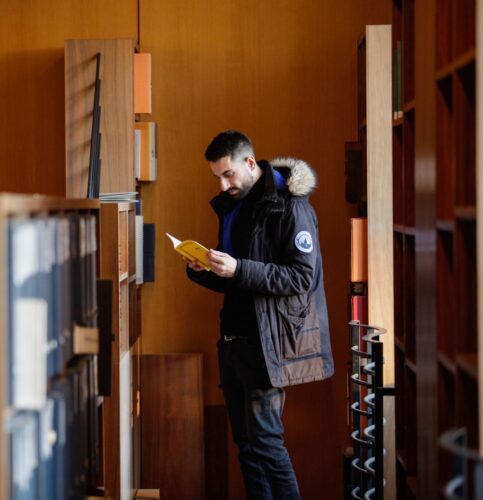

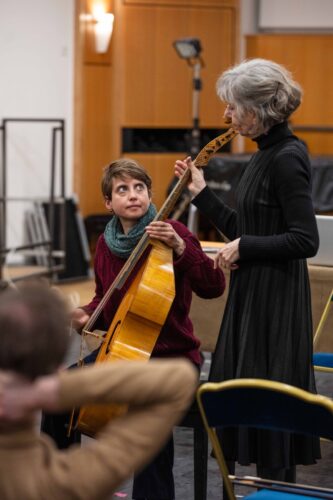
Recréer l’acoustique de la Chapelle royale
Rendez-vous donc, ce soir, à l’Espace de projection de l’Ircam, où l’acoustique, unique, de la Chapelle royale de Versailles a été reconstituée. Au début du projet, les compositrices et compositeurs ont eu droit à une visite guidée de la Chapelle. Ils ont pu en tester l’acoustique et l’ont eu en tête lorsqu’ils composaient. Comme Lully, Lalande, Charpentier et bien d’autres avant eux, ils ont ainsi écrit pour ce lieu. « Au-delà de la prouesse technique des équipes de l’Ircam, la reconstitution de l’acoustique de la Chapelle royale a du sens musicalement parlant. On sait les grands acousticiens qu’ont été les fondateurs de la Chapelle et bien des œuvres ont été conçues pour ce lieu… et pour aucun autre. », explique Fabien Armengaud. Et Clément Buonomo d’ajouter : « C’est aussi une question de bon sens et de confort musical. Nous travaillons les œuvres du programme chaque semaine à la Chapelle royale, en fonction de cette acoustique bien précise. Les interpréter dans un lieu à l’acoustique différente ne rendrait justice ni au travail de la Maîtrise ni aux œuvres au programme ! »
Suzanne Gervais
Photos © Morgane Vie
Photos © Ben Viaperalta
Photos © Déborah Lopatin
Photos © Marije van den Berg
Photos © Pascal Le Mee



)

